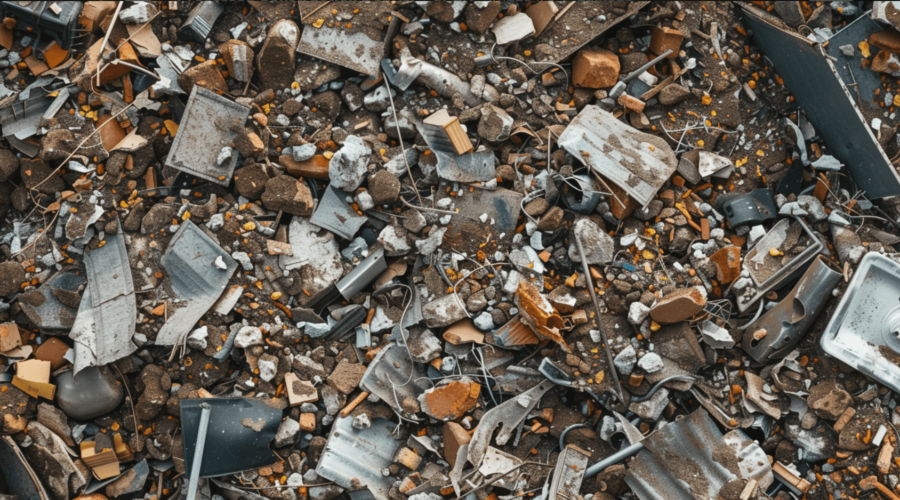Welcome to our fascinating exploration of how processed construction debris can be transformed into valuable materials for new building projects. In the ever-evolving world of sustainable construction, repurposing these materials is not only environmentally responsible but also economically beneficial.
Throughout this article, we will delve into the different types of processed construction materials and showcase inspiring examples of how they have been creatively used. From innovative architectural designs to durable building foundations, the possibilities are endless. Join us as we explore the benefits of incorporating these special processed construction materials and the processing techniques that ensure their quality.
Understanding Processed Construction Debris
In the construction industry, processed construction debris refers to materials derived from demolition or renovation sites that have undergone a specific treatment to make them suitable for reuse. These materials are invaluable resources that can be incorporated into new building projects, promoting sustainability and reducing waste.
Processed construction debris encompasses a wide range of materials that are considered construction materials. These include bricks, concrete, wood, glass, metals, and even plastic. Each material possesses unique characteristics and can be processed in different ways to maximize its potential.
The treatment process typically involves sorting, cleaning, and sometimes modifying the materials to enhance their quality and functionality. This ensures that they meet the necessary standards to be utilized effectively in new construction projects.
Types of Processed Construction Debris:
- Bricks: Bricks from demolished structures can be crushed or cleaned and reused in the construction of walls, walkways, or even decorative elements.
- Concrete: Crushed concrete can be used as a base material for roads or foundations or processed further to create new concrete products.
- Wood: Salvaged wood can find new life as reclaimed timber for building flooring, furniture, or decorative features.
- Glass: Recycled glass can be transformed into beautiful tiles, countertops, or decorative glass panels.
- Metals: Scrap metals can be melted down and repurposed for structural components, decorative accents, or even artistic installations.
- Plastic: Processed plastic materials can be used in various applications, including insulation, drainage systems, or furniture.
By understanding the wide array of processed construction materials available, architects, builders, and designers can unlock a world of creative possibilities. These materials reduce the demand for virgin resources and add unique character and sustainable value to new construction projects.
Transforming Waste into Treasure: Creative Applications
Processed construction debris has the potential to be transformed into valuable materials that can revolutionize new building endeavors. Creative minds have harnessed the power of these special processed construction materials to bring innovative projects to life, showcasing their versatility and environmental benefits.
Inspiring Examples of Repurposing
- Subway Tiles from Concrete: In a groundbreaking project, a team of architects repurposed crushed concrete debris into beautiful subway tiles. These tiles added a unique aesthetic to the space and reduced the demand for virgin materials.
- Artistic Light Fixtures from Reclaimed Metal: A creative collaboration between artists and architects led to the creation of breathtaking light fixtures made from processed metal debris. Each fixture became a work of art, highlighting the beauty that can emerge from waste.
- Upcycled Wood Panels for Interior Design: Designers found innovative ways to repurpose processed wood debris by transforming it into stunning wood panels for interior spaces. These panels brought warmth and character to buildings while reducing the demand for new timber.
- Sustainable Bricks from Demolished Concrete: Constructing new buildings from demolished concrete debris is cost-effective and reduces the carbon footprint. These sustainable bricks offer comparable strength and durability while minimizing environmental impact.
These inspiring examples demonstrate the transformative power of processed construction debris. By thinking outside the box, builders, architects, and designers have turned what was once considered waste into remarkable materials that positively impact the environment and enhance the aesthetics of new projects.
Benefits of Using Processed Construction Debris
Using processed construction debris in building projects offers numerous benefits, ranging from environmental advantages to significant cost savings. Incorporating these materials into construction endeavors can revolutionize the industry by promoting sustainability and improving resource efficiency.
1. Environmental Benefits:
- Reduced landfill waste: Utilizing processed construction debris helps divert significant waste from landfills, minimizing environmental impact and promoting a circular economy.
- Conservation of natural resources: By repurposing typically discarded materials, the need for extracting and consuming new raw materials is reduced, preserving valuable natural resources.
- Energy savings: Processing construction debris typically requires less energy compared to producing new materials, leading to lower carbon emissions and a smaller carbon footprint.
2. Cost Savings:
- Material cost reduction: Incorporating processed construction debris can significantly lower the expenses associated with purchasing new materials, contributing to overall project cost savings.
- Disposal cost reduction: By diverting construction debris from landfills, builders can avoid costly disposal fees, reducing project expenses.
- Tax incentives and grants: In some regions, governments may provide tax incentives or grants for projects that incorporate sustainable practices, including the use of processed construction materials.
3. Design Versatility:
Processed construction debris can offer a wide range of design possibilities and aesthetics. From reclaimed wood for unique flooring to repurposed bricks and stones for decorative accents, these materials add character and a distinct visual appeal to the built environment.
4. Strength and Durability:
Contrary to misconceptions about the strength and durability of processed construction debris, these materials can exhibit comparable or even superior performance to conventional materials. Proper processing techniques ensure that the materials meet quality standards and are suitable for various applications.
5. Resource Conservation:
By utilizing processed construction debris, builders can contribute to a more sustainable future by conserving natural resources, reducing waste generation, and minimizing the need for new material extraction. This helps preserve the planet’s resources for future generations.
Incorporating processed construction debris in new building projects is environmentally responsible and economically advantageous. The use of these special processed construction materials not only reduces waste but also offers unique design opportunities while maintaining strength and durability. It is a testament to the potential of innovation in construction practices, paving the way for a greener and more sustainable industry.
Processing Techniques for Construction Debris
In order to utilize processed construction debris effectively, it is crucial to understand the various techniques involved in transforming these materials into usable resources. Proper processing methods ensure the quality and functionality of the materials, making them valuable assets in new building projects.
- Sorting: The initial step in processing construction debris involves sorting the materials based on their composition and characteristics. This helps identify the types of debris that can be repurposed effectively, ensuring optimal resource utilization.
- Cleaning: Once the construction debris is sorted, the next step is to clean it thoroughly. This involves removing contaminants or impurities that may have accumulated during demolition or removal. Proper cleaning ensures that the processed materials meet the required standards for use in construction projects.
- Crushing and Grinding: Certain types of construction debris need to be broken down into smaller pieces before they can be used. Crushing and grinding techniques are employed to reduce the size of materials such as concrete, bricks, and stones, making them suitable for various applications.
- Screening and Separation: To ensure consistent quality and eliminate unwanted elements, the processed construction debris undergoes screening and separation. This involves passing the materials through specialized equipment that segregates them based on size, density, or other relevant factors.
- Treating and Conditioning: Depending on the specific requirements, some processed construction materials may undergo additional treatments or conditioning to enhance their properties. This can include processes like heat treatment, chemical treatment, or stabilization, which improve the durability and performance of the materials.
These processing techniques can transform construction debris into special processed materials that offer numerous benefits in new building projects. It reduces waste and promotes sustainable and eco-friendly practices in the construction industry.
Summary
Using processed construction debris can potentially revolutionize the building industry. By repurposing these materials, we can reduce waste, lower costs, and create sustainable structures that are both functional and aesthetically pleasing. The examples showcased throughout this article highlight the range of possibilities that special processed construction materials offer.
It is essential to evaluate what is considered construction material, as this opens up opportunities to creatively incorporate processed construction debris into new projects. By leveraging these materials, architects and builders can add unique touches and create one-of-a-kind structures that stand out from the crowd.
With its numerous benefits, industry professionals must recognize the value of processed construction debris and embrace its potential. By utilizing these materials, we can not only positively impact the environment but also contribute to the development of sustainable and innovative building practices. Going forward, let us all play a role in shaping a brighter and greener future for the construction industry.

